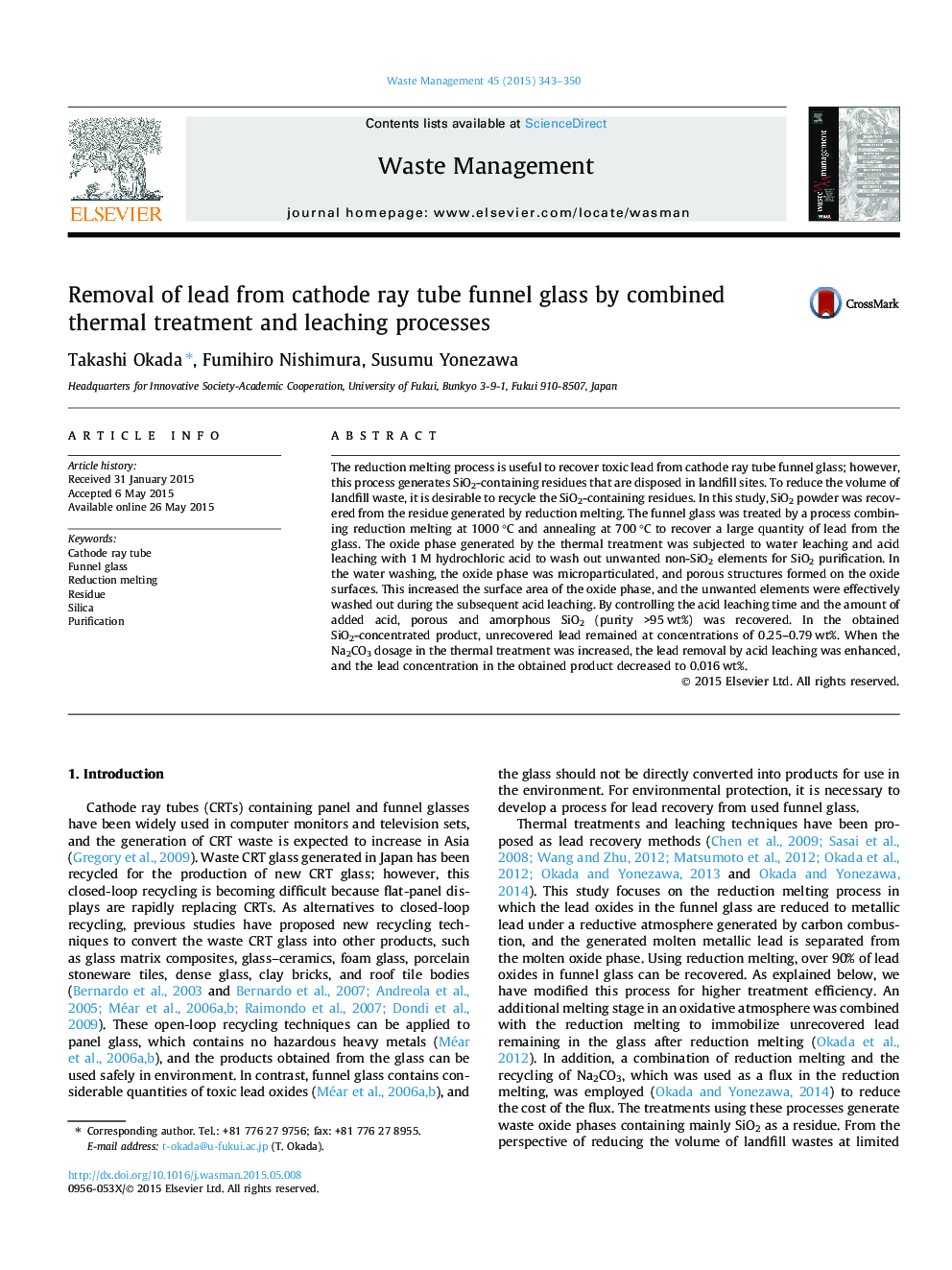| Article ID | Journal | Published Year | Pages | File Type |
|---|---|---|---|---|
| 6354349 | Waste Management | 2015 | 8 Pages |
Abstract
The reduction melting process is useful to recover toxic lead from cathode ray tube funnel glass; however, this process generates SiO2-containing residues that are disposed in landfill sites. To reduce the volume of landfill waste, it is desirable to recycle the SiO2-containing residues. In this study, SiO2 powder was recovered from the residue generated by reduction melting. The funnel glass was treated by a process combining reduction melting at 1000 °C and annealing at 700 °C to recover a large quantity of lead from the glass. The oxide phase generated by the thermal treatment was subjected to water leaching and acid leaching with 1 M hydrochloric acid to wash out unwanted non-SiO2 elements for SiO2 purification. In the water washing, the oxide phase was microparticulated, and porous structures formed on the oxide surfaces. This increased the surface area of the oxide phase, and the unwanted elements were effectively washed out during the subsequent acid leaching. By controlling the acid leaching time and the amount of added acid, porous and amorphous SiO2 (purity >95 wt%) was recovered. In the obtained SiO2-concentrated product, unrecovered lead remained at concentrations of 0.25-0.79 wt%. When the Na2CO3 dosage in the thermal treatment was increased, the lead removal by acid leaching was enhanced, and the lead concentration in the obtained product decreased to 0.016 wt%.
Related Topics
Physical Sciences and Engineering
Earth and Planetary Sciences
Geotechnical Engineering and Engineering Geology
Authors
Takashi Okada, Fumihiro Nishimura, Susumu Yonezawa,
